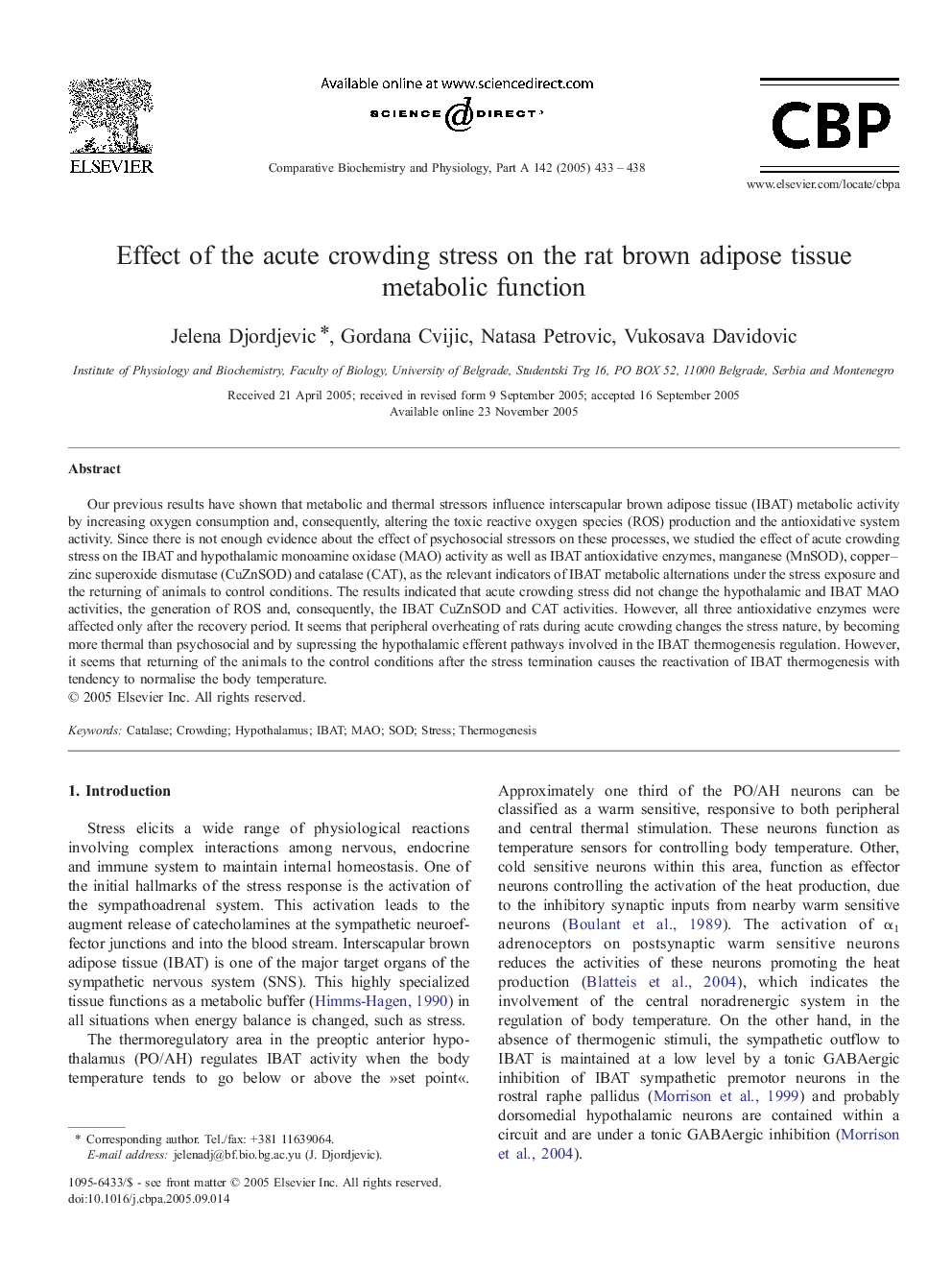| Article ID | Journal | Published Year | Pages | File Type |
|---|---|---|---|---|
| 10819046 | Comparative Biochemistry and Physiology Part A: Molecular & Integrative Physiology | 2005 | 6 Pages |
Abstract
Our previous results have shown that metabolic and thermal stressors influence interscapular brown adipose tissue (IBAT) metabolic activity by increasing oxygen consumption and, consequently, altering the toxic reactive oxygen species (ROS) production and the antioxidative system activity. Since there is not enough evidence about the effect of psychosocial stressors on these processes, we studied the effect of acute crowding stress on the IBAT and hypothalamic monoamine oxidase (MAO) activity as well as IBAT antioxidative enzymes, manganese (MnSOD), copper-zinc superoxide dismutase (CuZnSOD) and catalase (CAT), as the relevant indicators of IBAT metabolic alternations under the stress exposure and the returning of animals to control conditions. The results indicated that acute crowding stress did not change the hypothalamic and IBAT MAO activities, the generation of ROS and, consequently, the IBAT CuZnSOD and CAT activities. However, all three antioxidative enzymes were affected only after the recovery period. It seems that peripheral overheating of rats during acute crowding changes the stress nature, by becoming more thermal than psychosocial and by supressing the hypothalamic efferent pathways involved in the IBAT thermogenesis regulation. However, it seems that returning of the animals to the control conditions after the stress termination causes the reactivation of IBAT thermogenesis with tendency to normalise the body temperature.
Related Topics
Life Sciences
Biochemistry, Genetics and Molecular Biology
Biochemistry
Authors
Jelena Djordjevic, Gordana Cvijic, Natasa Petrovic, Vukosava Davidovic,
